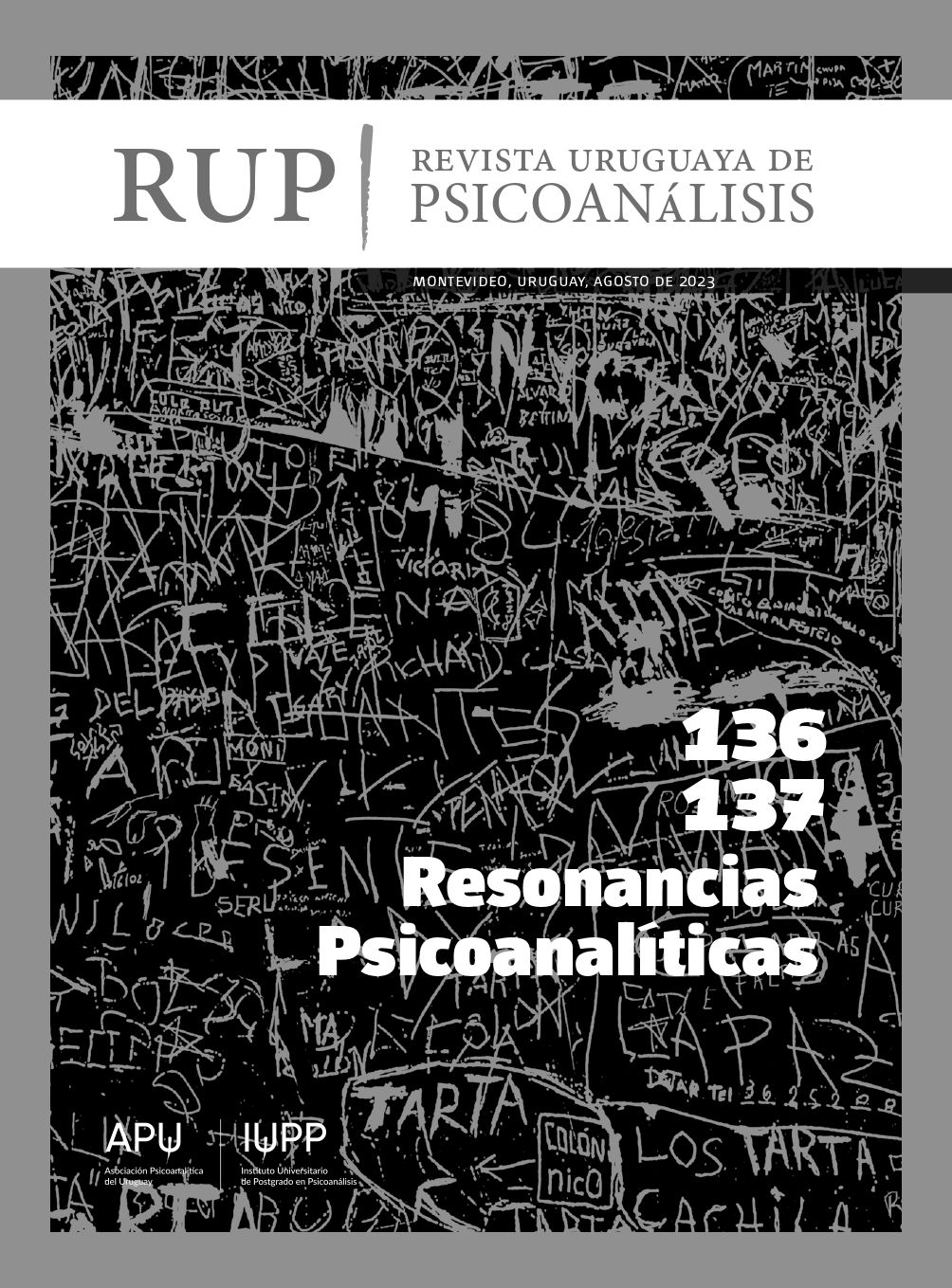Paternal presence in a changing world
DOI:
https://doi.org/10.36496/n136-137.a1Keywords:
Paternal function, Paternity, Erogenous body, Incest prohibition, Culture, Clinical materialAbstract
Over the past more than fifty years, there has been a significant change in the understanding of the father’s position and meaning
in child development. Whereas previously the father was seen more as a distant person and, in terms of the Freudian conception
of the Oedipus constellation, as a mediator of Oedipal prohibitions to establish a symbolic order, a cultural shift has led to new family constellations and to new conceptions of the father’s position. This article aims to compare and relate recent psychoanalytic and developmental psychological views of the importance of the father with the classical Oedipal concept. Based on the basic father function of protecting the child, a father protection on the preoedipal level and oedipal level are distinguished. Both complement each other and, according to the author, lead to an «anti-incestuous position» of the father. This thesis is illustrated by a clinical example.
Downloads
References
Abelin, E. L. (1971). The role of the father in the separation-individuation process. En J. B.McDevitt y C. F. Settlage (ed.), eparationindividuation (pp. 229-252). International Universities Press.
Abelin, E. L. (1975). Some further observation and comments on the earliest role of the father. International Journal of Psycho-Analysis, 56, 293-302.
Blass, H. (2011). Der Vater als vertrauter Fremder. AKJP, 151(3), 369-388.
Blos, P. (1985). Son and father: Before and beyond the Oedipus complex. Free Press.
Brehm, U., Huebener, M. y Schmitzet, S. (14 de diciembre de 2022). 5 Jahre Elterngeld. https://www.bib.bund.de/Publikation/2022/pdf/
-Jahre-Elterngeld-Erfolgeaber-noch-Handlungsbedarf.pdf?__blob=publicationFile&v=2
Dammasch, F. (2008). Die Krise der Jungen:Statistische, sozialpsychologische und psychoanalytische Aspekte (pp. 9-28). En F. Dammasch (ed.), Jungen in der Krise: Das schwache Geschlecht? Psychoanalytische Überlegungen. Brandes & Apsel.
Dammasch, F. (2009). Der Junge ohne vaterliche Struktur. En R. Haubl, F. Dammaschy H. Krebs (ed.), Riskante Kindheit: Psychoanalyse und Bildungsprozesse. Göttingen (pp. 49-66).
Vandenhoek & Ruprecht. Diamond, M. J. (1997). Boys to men: The maturing of masculine gender identity through paternal watchful protectivness. Gender and Psychoanalysis, 2, 443-468.
Freud, S. (1999). Totem and taboo. En J. Strachey (ed.), The standard edition of the complete psychological works of Sigmund Freud (vol. 13).Vintage. (Trabajo original publicado en 1913 [1912-1913]).
Freud, S. (2001). Civilization and its discontents. En J. Strachey (ed.), The standard edition of the complete psychological works of Sigmund Freud (vol. 21). Vintage. (Trabajo original publicado en 1930 [1929]).
Gaschke, S. (4 de octubre de 2015). Die Generation der Supervater. Welt am Sonntag, 4(40), 2-3.
Green, A. (2009). The construction of the lost father.En L. J. Kalinich y S. W. Taylor (ed.), The dead father: A psychoanalytic inquiry (pp. 23-46).Routledge.
Harris, A. (2009). Fathers and daughters. En B. Reis y R. Grossmark (ed.), Heterosexual masculinities: Contemporary perspectives from psychoanalytic gender theory (pp. 189-215). Routledge.
Herzog, J. M. (1994). Patterns of expectant fatherhood: A study of the fathers of a group of premature infants. En S. H. Cath, A. R. Gurwitt y J. M. Ross (ed.), Father and child. Routledge.
Kaddor, L. (2015). Zum Töten bereit: Warum deutsche Jugendliche in den Dschihad ziehen. Piper.
Klein, M. (1998). Gesammelte Schriften (vol 2.). Frommann-holzboog. (Trabajo original publicado en 1932).
Lacan, J. (1966). Funktion und Feld des Sprechens und der Sprache in der Psychoanalyse. En J. Lacan, Schriften 1 (pp. 71-169). Walter-Verlag. (Trabajo original publicado en 1953).
Laplanche, J. (2011). Nouveaux fondements pour la psychanalyse. PUF. (Trabajo original publicado en 1987).
Loewald, H. W. (1960). On the therapeutic action of psycho-analysis. International Journal of Psychoanalysis, 41, 16-33.
Meltzer, D. y Harris Williams, M. (2008). The apprehension of beauty: The role of aesthetic conflict in development, art, and violence. Karnac.(Trabajo original publicado en 1988).
Metzger, H.-G. (2006). Das Erlebnis der Vaterschaft und die Angst vor der frühen Kindheit. En F. Dammasch y H.-G. Metzger (ed.), Die Bedeutung des Vaters (pp. 313-332). Brandes & Apsel.
Metzger, H.-G. (2013). Fragmentierte Vaterschaften: Über die Liebe und die Aggression der Vater.Brandes & Apsel.
Ogden, T. (1989). The primitive edge of experience. Jason Aronson.
Rotmann, M. (1978). Über die Bedeutung des Vaters in der «Wiederannäherungsphase». Psyche, 32, 1105-1147.
Schirra, B. (2015). ISIS: Der globale Dschihad. Econ.
Seiffge-Krenke, I. (2001). Väter und Söhne, Vater und Töchter. Forum Psychoanal, 17, 51- 63.
Thomä, D. (2008). Vater: Eine moderne Heldengeschichte. Hanser.
Tönnies, S. (30 de agosto de 2009). Männer zu Vatern.
Frankfurter Allgemeine Sonntagszeitung, 35, 11.
Winnicott, D. W. (1984). Kind, Familie und Umwelt. Reinhardt. (Trabajo original publicado en 1964).
Downloads
Published
Issue
Section
License
Copyright (c) 2023 Revista Uruguaya de Psicoanálisis

This work is licensed under a Creative Commons Attribution 4.0 International License.


 This work is licensed under a
This work is licensed under a 